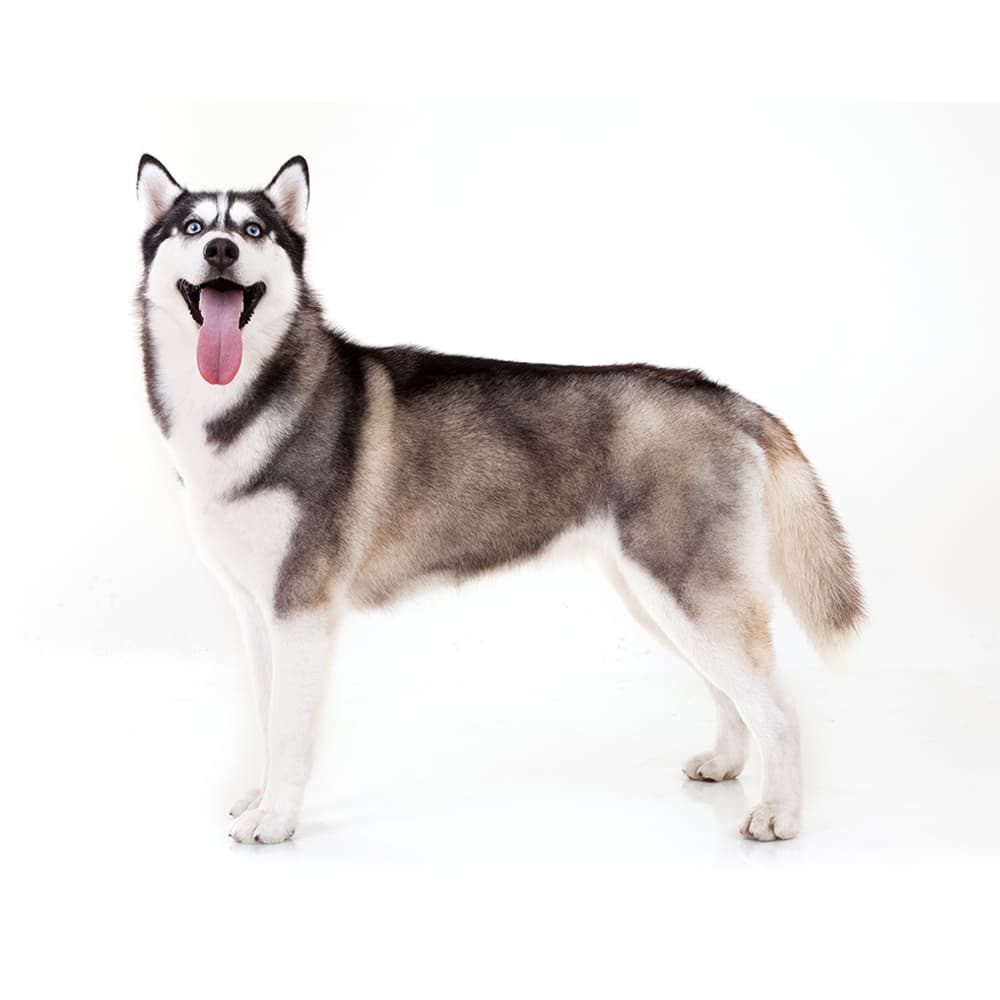Discover your dog's connection to this breed and 200+ others


Discover your dog's connection to this breed and 200+ others



The Siberian Husky, originally a sled dog breed used by the Chukchi people in Siberia, Russia, is believed to have an ancestry that spans back thousands of years. These dogs were bred specifically to endure harsh, Arctic conditions, to transport goods and people across vast, snowy expanses, and to act as family dogs when their workday was complete. During the Nome Gold Rush, they were imported to Alaska and used as sled dogs during the early 20th century. They gained significant recognition when a team of Siberian Huskies participated in the renowned 1925 serum run to Nome, also known as the "Great Race of Mercy," which helped stop a diphtheria epidemic.
Siberian Huskies are generally healthy dogs, but as a larger dog breed they are at risk of developing orthopedic problems such as hip and elbow dysplasia. Genetic testing is recommended, including for the following specific conditions: GM1 Gangliosidosis, X-linked Progressive Retinal Atrophy 1, hyperuricosoria, degenerative myelopathy, and progressive rod-cone degeneration.
Siberian Huskies are known for their friendly, outgoing, and mischievous personalities. They are usually good with children and welcoming to strangers, which doesn't make them particularly good guard dogs. They are also intelligent, independent, and can be somewhat stubborn, which can make training a challenge if not started early and maintained consistently.
Because of their history as sled dogs, they require a lot of exercise and mental stimulation. They love to dig and are known as yard escape artists. They have a strong prey drive and will chase small animals, and should never be off-leash in public. They have a strong pack mentality and do best with other dogs and with families if they are socialized early on. Siberian Huskies have a double coat that keeps them well-insulated against harsh winter conditions. Their coat sheds regularly, but goes through two big shedding processes per year.
A canine genetic lineage is a group of individuals or entire breeds that descended from common ancestors predating modern breed formation. Often these lineages are associated with a ‘type’ of dog with a unique historical working role and associated behaviors (e.g., herding, scent hunting, etc.).
Spitz and Sled Dogs originate in the Arctic and subarctic regions which caused them the develop adaptations to cold climates. Some of these adaptations give rise to characteristics of the lineage, most notably a dense double coat that helps with insulation. The lineage of these dogs can be followed back to ancient breeds developed by Indigenous people. These ancient breeds were used as an aid for transportation, herding, guarding, and hunting. These jobs have created dogs that are independent, intelligent and have strong work ethics as well as a sturdy body that helps them to pull sleds or go on long journeys over rough terrain.
Example breeds with ancestry from this lineage include Akita, Chow Chow, and Siberian Husky.
According to the UKC, the Chukchi Indians, natives to the Soviet Arctic, developed the Siberian “Chukchi” (later changed to “Husky”), approximately 3,000 years ago.
The striking blue or multicolored eyes for which Siberian Huskies are known are a genetic gift from their close ancestry with the Siberian wolf.
Huskies are famous for their "talking" abilities - they often howl, chirp, and make other vocal sounds more than other dog breeds.
Despite their high energy levels and need for exercise, Siberian Huskies can be surprisingly calm and relaxed indoors.
https://vgl.ucdavis.edu/breed/siberian-husky
https://www.akc.org/dog-breeds/siberian-husky/
https://iditarod.com/race-history/
https://www.ukcdogs.com/siberian-husky
https://www.fci.be/en/nomenclature/SIBERIAN-HUSKY-270.html
Recommended by top vets with decades of experience
21 breeds
64 genetic health markers
50 genetic trait markers
